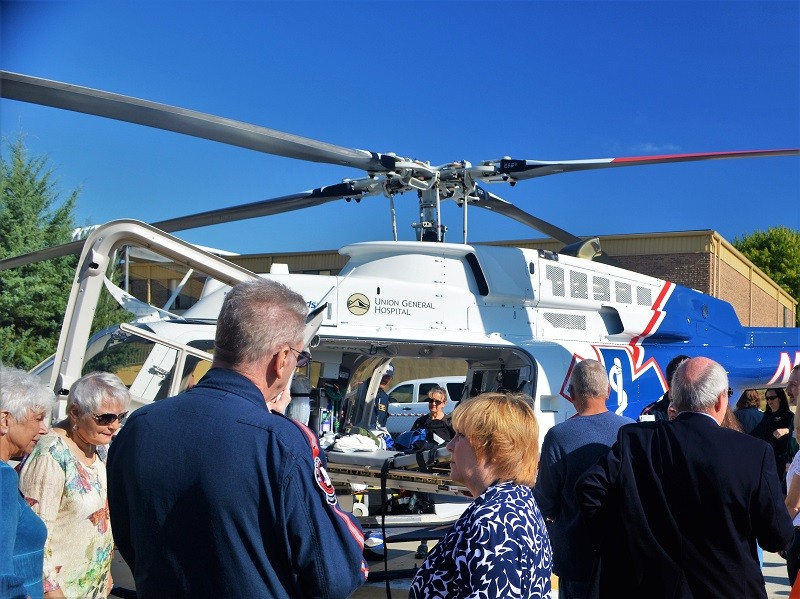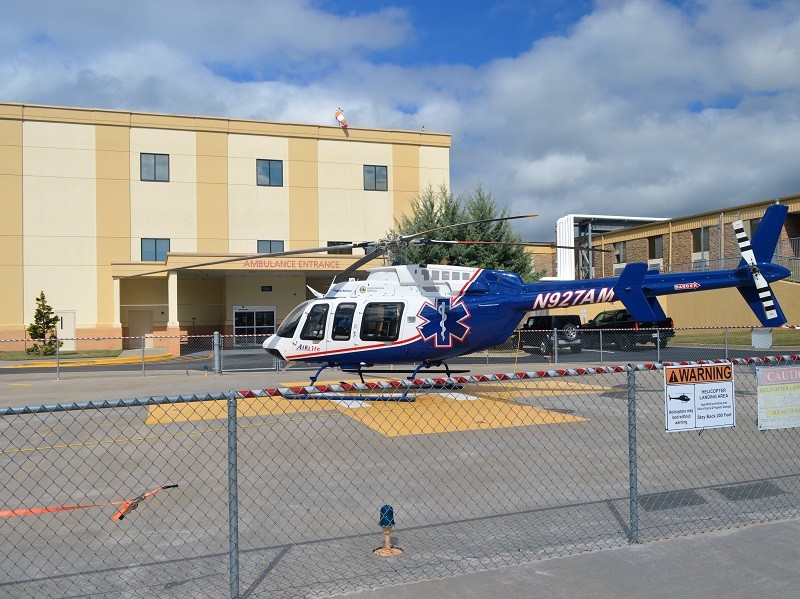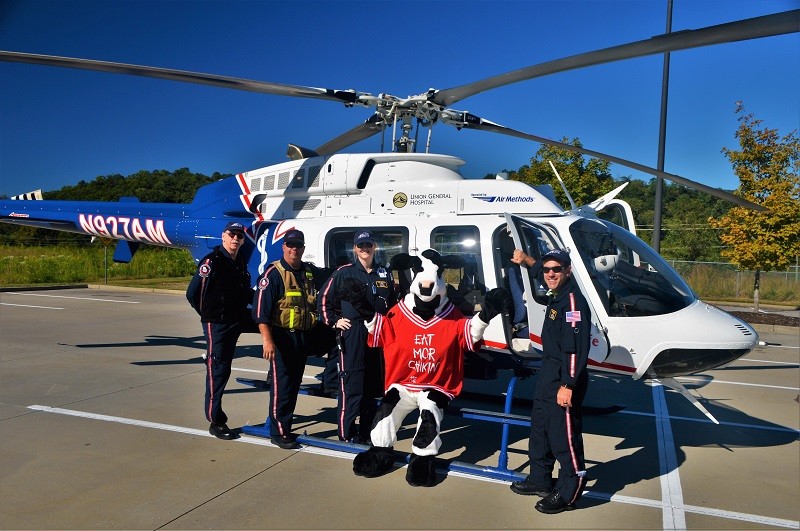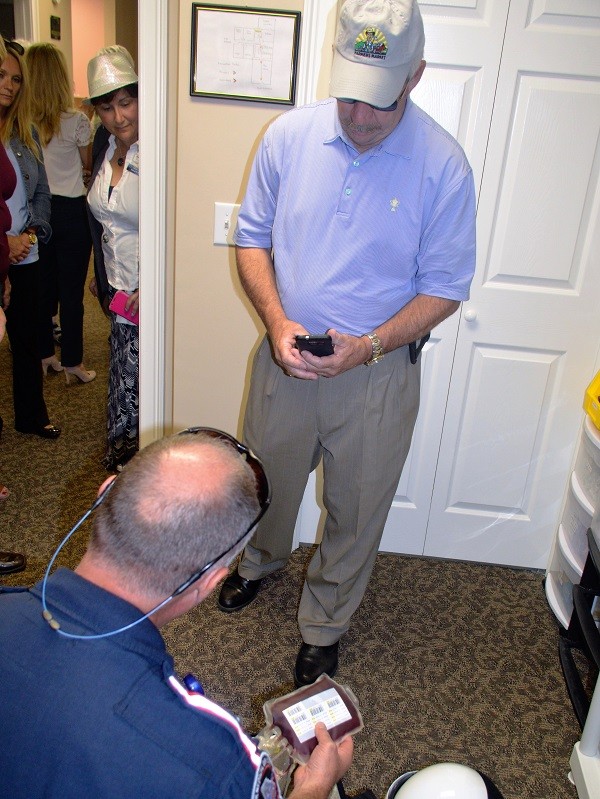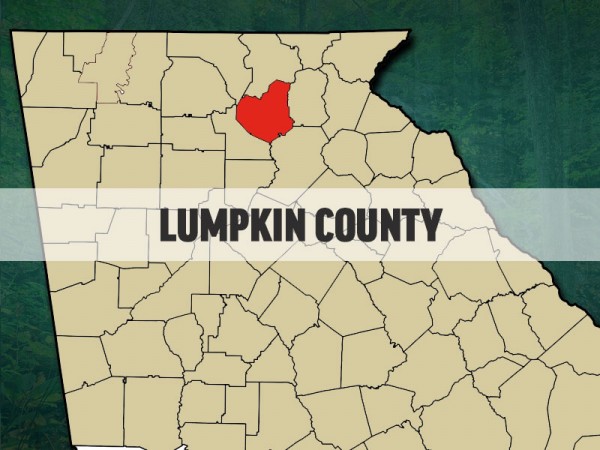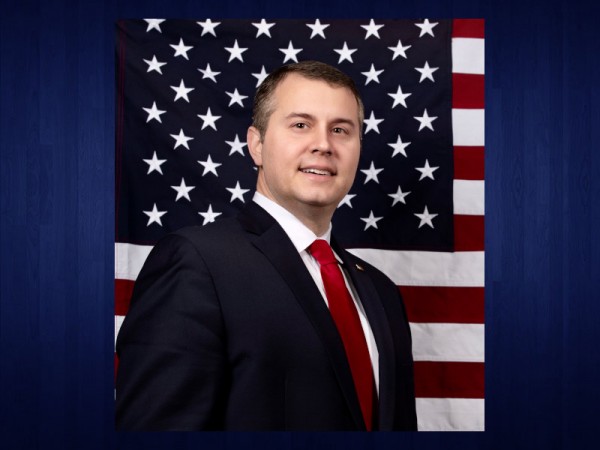BLAIRSVILLE — When trauma or a severe medical crisis strikes, every minute counts in getting a patient to definitive care.
The newest critical emergency tool is up and running in the North Georgia mountains in the form of an enhanced medical helicopter to help narrow the gap in transport time.
AirLife Georgia 14 is a high-performance aircraft operated by Air Methods and based at Union General Hospital.
The helicopter has been in operation for about three months, and last week welcomed the community for a ceremonial ribbon cutting, tour of its base and brief explanation of its services.
Jason Grady, National Register Paramedic and Northeast Georgia Regional STEMI coordinator out of Northeast Georgia Medical Center, discussed the importance of the new aircraft.
"In something like a heart attack, we use the term 'time is muscle'," Grady said. "Every minute that goes by you're losing more heart muscle, more heart muscle is being damaged, which can lead ultimately to heart failure or heart death."
Grady says terrain and distance make reaching a catheterization lab by ambulance less than efficient, therefore decreasing outcomes for the patient.
"The goal with treating a heart attack is efficiency and time," Grady said. "The faster that you can get an artery open, the better the patient is going to be. Right now, the best way to open an artery is inside a cath lab. Not every hospital has a cath lab, so Northeast Georgia Medical Center is the closest cath lab to this area."
By utilizing the helicopter, travel time is greatly reduced.
"We can do all the things we can do in the cath lab, but if we can't get the patient there rapidly then we're still not doing as well as we can, so we worked with Union General Hospital, helped them out with some standardized protocols, time benchmarks, some communication and realtime feedback and they have developed a way to identify and begin to treat and communicate on these heart attacks in really an efficient way that most places aren't able to do," Grady said.
"Now, with the addition of the helicopter here right outside, they call the crew and the pilot starts up the helicopter, the crew goes in and helps get the patient ready and they’re out the door within 15 minutes, another 15-minute flight to Gainesville and the cath lab, because of the great communication they're able to give, the cath lab is there, it's ready, it's set up," Grady said. "They don't even go to the emergency room in Gainesville. They go directly to the cath lab, where we're ready and open the artery within just a few minutes of arriving."
Grady said through the new protocols in place between Union General Hospital and Northeast Georgia Medical Center the quality of medical care for the region is improved.
"So we know with survival rates that the faster we can open up that artery the better off we are," Grady said. "Really across the country the biggest areas where we're not doing as well with time is when a patient arrives to a hospital that does not have a cath lab. The process to get that patient to a cath lab often is a logistical nightmare."
In some areas of the country, arrival time to a cath lab can be two to three hours.
"We know that a patient that gets their artery open in under 90 minutes, that survival goes up," Grady said. "We know that anything after 90 minutes we know statistically that survival is not as good — and not just survival, but heart failure. So while you might survive, you might have the rest of your life going through heart failure treatment because of the damage that was done by the delayed treatment.
"Having this helicopter here, having Union General Hospital who is so good at diagnosing, treating and communicating, we've already seen lives saved," Grady said.
But it's not just heart attack and stroke victims who will benefit from the new helicopter's location.
Trauma victims, whether from car wrecks, falls or other means, often require rapid transport to an appropriate trauma center.
Another new tool — the first of its kind in Georgia for AirLife — is the availability of onboard blood and plasma for use by the medical flight crew until the aircraft can reach the trauma center.
Gene Jones, regional clinical manager for AirLife Georgia, shared more about that.
"Our Blairsville aircraft is the first aircraft in Georgia with our program to carry blood," Jones said. "We also carry liquid plasma. We've been carrying that now for about three months."
Clinical Base Lead Joe Pardue for AirLife Georgia 14 in Blairsville provided more specifics about that new capability.
"What we have packed here is like gold," Pardue told Union County Commissioner Lamar Paris during a tour of the base. "This is liquid plasma and these are packed-up blood cells. When people start bleeding and spilling this out on the ground, you've got to stop what's bleeding and you've got to put this back."
Patients without the availability of blood and plasma who don't make it to a trauma center in time generally don't survive, Pardue said.
"The blood and plasma brings lifesaving aid or lifesaving service to the patient rather than having to wait until you get to the hospital or the trauma center to get that blood," Jones said. "We're able to get that to you immediately. It certainly allows patients the time that they need to get to that higher level of care, that trauma center, to the surgeons."
Pardue said the helicopter carries O-negative and O-positive pack cells. The plasma is for clotting bleeding disorders.
"We give them in tandem, basically, if they're bleeding really bad," Pardue said.
Soon Blairsville-based AirLife Georgia 14 won't be the only one to carry blood and plasma. It will be expanded to AirLife Georgia 2 in Gainesville and the other 10 AirLife bases around the state, and to the bases in two adjacent states.
"We're rolling this out to our entire region — Georgia, South Carolina and Florida, which we'll have it at every one of our bases in the region targeted by the end of the year," Jones said.
"This is the investment that Air Methods is rolling out, and we kind of got it all started right here in Blairsville," Pardue said. "We've already given blood twice."
Pardue said the base at Union General Hospital is valuable for the entire region because of the mountainous terrain and distance from expanded medical care such as trauma centers.
"Geographically, I've always know that this is a place that would be ideally suited for helicopter EMS transport," Pardue said. "It's about 75 miles in any cardinal direction to either Chattanooga or Greenville, or into Atlanta, so just the mountain ridge alone being in the way between here and there is a real problem. The helicopter overcomes that."
Pardue says the Blairsville location benefits the entire region.
"I just think that it brings a higher level of care and greater access to definitive care by having that helicopter here," Pardue said.
Pardue has been providing helicopter-based EMS for almost 16 years, and another crew member has been doing it in excess of 25 years. Another recent hire flew in Western North Carolina for about six years.
"We've just got a highly experienced group of people that have collectively come here and I couldn't be more proud of the medical crew that we've assembled here," Pardue said. "It's just a real top-notch staff."
The Blairsville-based aircraft covers a large area.
"We typically look at about 30 to 50 miles in a ring, but basically this helicopter has a very extensive range," Pardue said. "It carries enough fuel and can carry enough weight so we can go out considerably farther than that and pick up a patient and take them back. We routinely go up into Western North Carolina and go to Atlanta, or Western North Carolina to Asheville, N.C. — we've done that a few times. We go to Chattanooga frequently, so it's got a considerable range."
AirLife Georgia 14 covers all or portions of Union, Fannin, Lumpkin, Rabun and Towns counties in Georgia, as well as Cherokee and Clay counties in North Carolina. Additionally, the aircraft shares White County with AirLife Georgia 2 in Gainesville.
"This helicopter is a really late model," Pardue said. "If I'm not mistaken, it's a 2016 model. We are able to sit on the helipad here with a full tank of gas, which is pretty phenomenal in the helicopter world. To carry as much weight as we carry, that's a pretty big deal."
Pardue said the helicopter, with a full tank of fuel, is able to lift off with a full crew and a patient.
"We've had some patients. normal size people, with two medical crew in the back plus a third medical crew [member] that's training, plus a pilot," Pardue said. "We've been able to go and land and take off. We've lifted some really heavy patients in the region that are in excess of 400 pounds, which is really kind of unheard of before now, so we're really excited about that capability."
Some people might question whether a helicopter based at Union General Hospital in Blairsville would see much action, but Pardue said the workload is steady.
"What we're finding is that with us being up here and being as busy as we are up here, because we are a rather busy base, that we're being cross-covered with our Gainesville base and with our Jasper base down in Pickens County, and even vice versa," Pardue said. "It's really kind of a good marriage of assets that are able to come together."


